AHA vs BHA: what's the difference?
Understanding Alpha Hydroxy Acids (AHAs) and Beta Hydroxy Acids (BHAs)

When it comes to skincare, there are countless ingredients that promise to improve your skin. Two of the most popular and effective are alpha hydroxy acids (AHAs) and beta hydroxy acids (BHAs). But what exactly are they, and how do they differ?
AHAs: Exfoliating the Surface
AHAs are water-soluble acids derived from fruits, sugar, and milk. They work by gently exfoliating the surface of the skin, removing dead cells and revealing smoother, brighter skin. Common AHAs include:
- Glycolic acid: Derived from sugarcane, it's known for its ability to penetrate deep into the skin.
- Lactic acid: Found in milk, it's a gentler AHA that's suitable for sensitive skin.
- Citric acid: Derived from citrus fruits, it helps to brighten the skin and reduce hyperpigmentation.
BHAs: Targeting Deeper Pores
BHAs, on the other hand, are oil-soluble acids that can penetrate deeper into the pores. This makes them particularly effective for treating acne and reducing congestion. The most common BHA is salicylic acid, which is derived from willow bark.
When to Use AHAs and BHAs
- AHAs: Ideal for those with dry or dull skin, as they can help to improve texture and brighten the complexion. They're also effective for treating fine lines and wrinkles.
- BHAs: Best suited for those with oily or acne-prone skin. They can help to unclog pores, reduce inflammation, and prevent future breakouts.
Tips for Using AHAs and BHAs
- Start slow: If you're new to AHAs or BHAs, it's important to start with a lower concentration and gradually increase it as your skin tolerates it.
- Use sunscreen: Both AHAs and BHAs can make your skin more sensitive to the sun, so it's essential to wear a broad-spectrum sunscreen every day.
- Patch test: Before using a new product containing AHAs or BHAs, do a patch test on a small area of skin to check for any adverse reactions.
Products to Try
Looking to incorporate AHAs or BHAs into your skincare routine? Here are a couple of suggestions to get you started:
Refresh Exfoliating Cleanser- For the best of both worlds this cleanser contains the AHA glycolic acid, and the BHA salicylic acid found in willow bark extract. Glycolic acid helps to gently remove dead skin cells, which can help improve skin texture, reduce the appearance of fine lines and wrinkles and brighten the complexion. Meanwhile, salicylic acid has both exfoliating and anti-inflammatory properties. This can help unclog pores, reduce acne, and promote a clearer complexion.
Clarity Cleanser- This cleanser also contains the BHA salicylic acid, to help unclog pores and reduce breakouts. Working together with the AHA citric acids in grapefruit seed and orange peel, these acids provide a powerful deep clean for your skin, while remaining gentle enough to support twice a day washing.
UPDATE** Radiant Eye Gel- Check out our latest product, Radiant Eye Gel, containing lactic acid! Sodium lactate is a AHA typically derived from the fermentation of sugars, such as those found in corn or beets. It acts as a gentle exfoliant, helping to remove dead skin cells and improve skin texture. This can reduce the appearance of rough patches, uneven skin tone, and fine lines. Beyond exfoliation, it also provides the additional benefits of extra hydration, pH balancing, softening and anti-inflammatory properties all giving you a happier, smoother complexion.
In Conclusion
Both AHAs and BHAs are valuable tools for improving skin health. By understanding their differences and choosing the right product for your skin type, you can achieve a brighter, smoother, and more radiant complexion.


